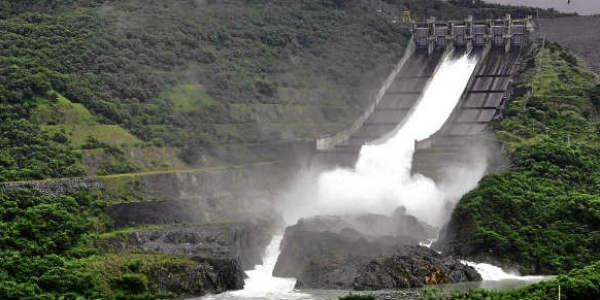 The annual rainfall for India stands at 1188 mm, out of which 887 mm is weakness during the Monsoon which means three fourth of the annual rain is observed during the Monsoon season.
The annual rainfall for India stands at 1188 mm, out of which 887 mm is weakness during the Monsoon which means three fourth of the annual rain is observed during the Monsoon season.
The seasonal forecast when issued is with respect to various rainfall categories. Normal Monsoon is considered between 96 and 104 percent. Excess Monsoon is declared when rains are more than 110 percent, while below normal is between 90 and 95 percent. Meanwhile, less than 90% is considered to be drought. Normal monsoon is considered good for the country.
[yuzo_related]
As far as the monthly rainfall performance during Monsoon is concerned, June observes 16 cm of rains, July records 29 cm, August sees 26 cm and September ends with 19 cm of rains.
Rainfall during the monsoon is not linked with early or late onset. In fact, the earliest monsoon onset at times has ended with overall deficiency and late arrival have resulted in surplus rains as well.
As far as the spread is taken into consideration, the average of a few weeks of scanty and few weeks of excessive rains are also seen during some normal monsoon seasons, which is not a desirable situation. What is more important here is the time and space of rain. In fact, if timely and spatial distribution of rains exists and spread is good, even a little bit of deficiency can be absorbed in terms of total quantum of monsoon rains.
It is also seen that the best of Monsoon leaves about 15 to 20% of districts with deficiency, while there are times when during a low performing Monsoon season, 15 to 20% of areas receive good rains while other regions are deficient.
There are pockets which are rainfed including the areas of Maharashtra, Madhya Pradesh, and Gujarat. However, there are some parts including Punjab and Haryana which depend on groundwater. Thus, if they receive less rainfall, a slight shortfall is not considered too bad.
If rains continue to be normal, they not only benefit the rainfed areas but the expenditure in terms of irrigation including labour costs, electricity etc. can be cut down in areas dependent on groundwater. In fact, the groundwater gets recharged which helps in irrigation purposes.
With normal monsoon rains, all the 91 of the reservoirs get rainfed. These reservoir levels are sufficient to last throughout the season resulting in no shortage of water.
Normal rains also recharge the water table which is another added advantage. A little bonus exists after Normal Monsoon for the Rabi crops as it leaves sufficient soil moisture and humidity in the air.
Image Credit: wikipedia.com
Please Note: Any information picked from here must be attributed to skymetweather.com


